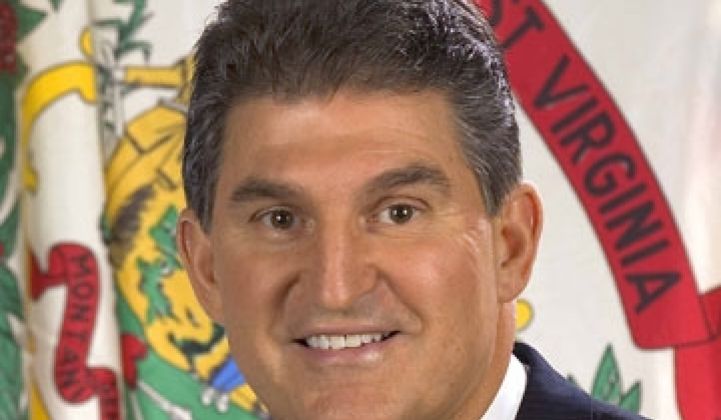Jesse Berst's Global Smart Energy and Michael Butler's Cascadia Capital have assembled this multi-part series where business leaders share their opinions on the future of the smart grid. This fifth installment features West Virginia Gov. Joe Manchin III.
Q: What is the most important next step in the development of the smart grid?
A: There is not one important step, but a few steps that we should take at the same time. This is critical since there is not one definition for smart grid or one smart grid solution that everyone can agree upon. Coordination among and between different power generation, transmission and distribution issues, especially beyond any narrow definition of smart grid, such as one that limits the discussion to smart metering issues, is important. Smart grid, as a public policy concern, does not exist in a vacuum. So, we must, collectively, move toward those goals that can create the greatest benefit for the greatest number.
In West Virginia, we are moving forward simultaneously on a few issues. For example, we are introducing alternative and renewable portfolio standards legislation this legislative session to require 25 percent of the electricity sold to retail customers to be generated from alternative and renewable energy sources by 2025. These sources would include advanced coal technologies, wind, solar, and other nontraditional sources of energy, along with provisions for smart grid technology deployments.
Beyond the portfolio standards, the bill requires the West Virginia Public Service Commission to set net metering and interconnection requirements. It creates a credit trading system for the implementation of demand-side projects and greenhouse gas emission reduction or offset projects. The bill establishes the Alternative and Renewable Energy Resources Research Fund to provide matching grants to state universities for research on alternative and renewable energy projects. The bill also provides incentives to locate new alternative energy facilities in West Virginia. Addressing the energy, environmental and economic issues in an integrated fashion, like this, is crucial to a better, more modern generation, transmission and delivery system.”
Q: What kind of "shovel-ready" jobs can the smart grid produce?
A: Right now, West Virginia is home to a few, innovative technology projects. In the northern part of the state, Allegheny Power has been working with a West Virginia technology company, Augusta Systems, on a number of smart grid projects that involve the use of a fully integrated, intelligent communications and control network, featuring smart meters, line and substation monitors, automation equipment, distributed resources, customer appliances and more. In the southern part of the state, Appalachian Power has been exploring the use of advanced storage devices as part of a smart grid solution. The company has deployed a NaS battery storage system to assist during peak demand periods.
From an employment perspective, these projects create opportunities for utility engineers and consultants, equipment manufacturers, vendors and installers. As these are demonstration projects, the employment numbers are limited currently, but as more projects move forward, opportunities for businesses and our workforce increase.
Q: What role should the federal government play in this transformation? What role should the states play?
A: We have seen from the energy policy act of 2007 and from the recent stimulus bill that the federal government can assist in setting the tone and providing important funding for smart grid efforts. It can also play an important role in encouraging the setting of standards for smart grid technologies, which is underway. So too, can the states make an impact through legislation and regulatory action, such as through the proposed portfolio standards bill in West Virginia.
From a big picture perspective, progress must occur on multiple fronts, in a coordinated manner. A smarter grid will require the continued development of next-generation technologies by researchers and manufacturers, but also the deployment of current technologies by utilities. It will require those utilities to work with public service commissions on effective implementation of projects and technologies. It will require policy makers to ensure that federal and state governments promote smart grid deployment. It will take all of us to work with and educate our constituents and customers on the needs and challenges involved.
For example, we are putting together a smart grid implementation plan in West Virginia. My energy office is working with the state public service commission and the major utilities in the state on this effort, which is partially funded by the state and the U.S. Department of Energy. This is a prime example of the type of cooperation and coordination, which is so necessary for grid modernization. Not one of those entities can do anything on their own about this important issue. Utilities cannot make their electricity grids smarter overnight. Regulators and policy makers cannot will a smart grid into existence. We are all in it together.
(Pictured above West Virginia Gov. Joe Manchin III.)
This piece is not connected with Greentech Media News. The views expressed here are those of the authors and are not endorsed by Greentech Media.



